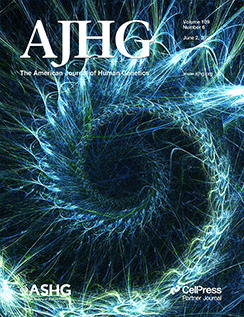Unraveling the impact of VHL exon 2 mutations in erythrocytosis or von Hippel-Lindau disease identified RNA-binding proteins involved in VHL splicing.
IF 8.1
1区 生物学
Q1 GENETICS & HEREDITY
引用次数: 0
Abstract
This study explores the impact of mutations in the exon 2 of the von Hippel-Lindau (VHL) gene, associated with erythrocytosis or von Hippel-Lindau disease. We analyzed 15 missense and synonymous genetic variants to assess their effects on splicing and VHL protein stability. Using in silico predictions and functional assays, we found that some specific mutations impact splicing and reduce protein stability, allowing their clinical classification as pathogenic. This study revealed exonic-splicing regulatory regions. Notably, by performing RNA-protein pull-down, we identified two RNA-binding proteins, hnRNPF and hnRNPAB, as key regulators of VHL splicing. Our findings reveal the limitations of current splicing-prediction tools in recognizing exonic-splicing enhancer (ESE) or silencer (ESS) sequences and suggest that mutations can differentially affect disease phenotypes by influencing both splicing and protein stability. These insights enhance our understanding of the molecular mechanisms underlying VHL-associated disorders and expand the landscape of regulatory elements and protein factors involved in VHL splicing regulation.揭示VHL外显子2突变在红细胞增生症或冯希佩尔-林道病中的影响,发现了参与VHL剪接的rna结合蛋白。
本研究探讨了与红细胞增多症或von Hippel-Lindau病相关的von Hippel-Lindau (VHL)基因外显子2突变的影响。我们分析了15个错义和同义遗传变异,以评估它们对剪接和VHL蛋白稳定性的影响。使用计算机预测和功能分析,我们发现一些特定的突变影响剪接并降低蛋白质稳定性,从而使其临床分类为致病性。本研究揭示了外显子剪接调控区域。值得注意的是,通过RNA-protein pull-down,我们确定了两个rna结合蛋白hnRNPF和hnRNPAB是VHL剪接的关键调节因子。我们的研究结果揭示了当前剪接预测工具在识别外显子剪接增强子(ESE)或沉默子(ESS)序列方面的局限性,并表明突变可以通过影响剪接和蛋白质稳定性来不同地影响疾病表型。这些见解增强了我们对VHL相关疾病的分子机制的理解,并扩大了参与VHL剪接调节的调控元件和蛋白质因子的范围。
本文章由计算机程序翻译,如有差异,请以英文原文为准。
求助全文
约1分钟内获得全文
求助全文
来源期刊
CiteScore
14.70
自引率
4.10%
发文量
185
审稿时长
1 months
期刊介绍:
The American Journal of Human Genetics (AJHG) is a monthly journal published by Cell Press, chosen by The American Society of Human Genetics (ASHG) as its premier publication starting from January 2008. AJHG represents Cell Press's first society-owned journal, and both ASHG and Cell Press anticipate significant synergies between AJHG content and that of other Cell Press titles.

 求助内容:
求助内容: 应助结果提醒方式:
应助结果提醒方式:


